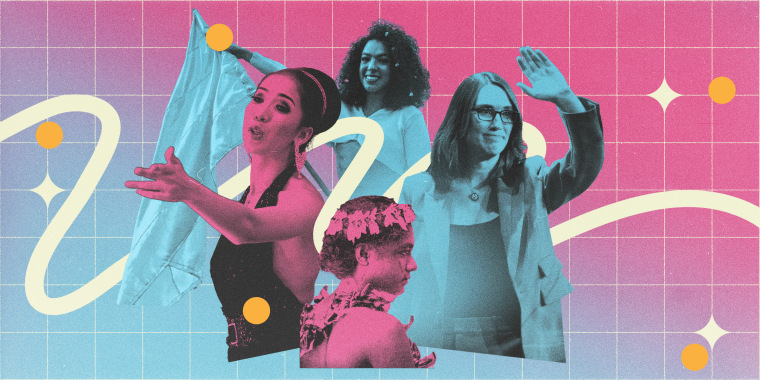In 2025 thus far, 940 anti-trans bills have been introduced in the United States, sparking heated debates over transgender rights. Yet, this fight obscures a deeper truth: transgender and nonbinary people have existed throughout human history, with distinct roles in cultures around the world.
“Most every culture has recognized trans people and gender non-conforming people,” says Quinn Bishop, a queer history educator and tour guide in New Orleans. “It’s just that people haven’t always accepted them.”
Here's a look at the ways trans and gender non-conforming people have existed across different cultures throughout history.
American Samoa
In American Samoa, there are four genders: male, female, fa’afafine, and fa’afatama — unique gender categories that fall outside the binary. Fa’afafine and fa’afatama have distinct and respected roles in Samoan society, according to Bishop, and they have been fully recognized genders in American Samoa since before the 20th century.
Fa’afafine and fa’afatama educate people about sex and care for community elders, and they frequently use their gender nonconformity as a way to poke fun at or exaggerate binary gender roles and introduce humor into taboo subjects, comparable to to how drag queens use gendered humor.
North American Indigenous Cultures
In North American Indigenous cultures, the term ‘two-spirit’ refers to individuals who embody both masculine and feminine qualities, recognized by many tribes long before colonization.
Two-Spirit is a modern umbrella term that covers many different genders, Bishop explains. Because there are so many different indigenous tribes and languages, it’s difficult to make generalizations about two-spirit as a gender category. In fact, the term two-spirit was created in 1989 from the word Hemaneh in the Ojibwe language to give indigenous gender nonconforming people a way to be recognized across tribes. Hemaneh translates roughly to half-man, half-woman, but many tribes recognize far more than three genders.
South Asia
“You see similar identities in other cultures — from India’s hijra to Thailand’s kathoey. These identities existed before modern colonial frameworks disrupted them,” explains Bishop.
Hijra, who are typically male assigned people who live as women, are a traditionally recognized third gender in India, but their status is complicated by the increasing acceptance of transgender people who don’t identify as hijra. Kathoey is usually translated as “ladyboy,” and they are comparable to transgender women, but both their gender identity and their role in Thai culture is more complicated than that.
Part of the difficulty of describing who kathoey are is that the term doesn’t translate well. Some kathoey do identify as trans women, but some are more similar to drag queens — and there are other kathoey that don’t fit into either of those categories. And while kathoey has been used as a third gender descriptor in Thai culture for centuries, not everyone loves the term. The word kathoey is sometimes used as a slur against trans women, as a way of insinuating that they aren’t actually women.
“I wish we could broaden the scope of our thinking about human history,” says Devlyn Camp, a historian and host of the podcast “Queer Serial.”
When Did Gender Nonconformity Become A Threat?
So when — and why — did gender identification outside of male and female become a concern?
Bishop says it wasn’t until Christianity became dominant in Europe that gender nonconformity was framed as a threat to the established social order. She adds that the idea that there are only two genders — male and female — is not only quite new considering the scope of human history, but it is also relatively specific to Euro-Christian colonial culture.
“Transphobia and gender stigma have deep roots, often tied to the rise of colonial powers like the Roman Empire. The rejection of non-binary and transgender people wasn’t just about culture; it was also political,” says Bishop.
“We should be asking ourselves what we can learn about our own society instead of trying to romanticize or appropriate other cultures. It’s critical not to fetishize Indigenous cultures when learning about gender,” says Bishop.
Camp agrees, adding that it’s equally important to look towards our own future.
“While there’s still a long way to go, the conversation about gender is evolving,” Camp says. “There will be progress, though not without resistance, and we must be prepared for both.”

